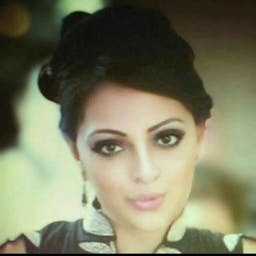FAIRY TALE ADDICTIONS -by Shaheen Sultan Dhanji
Jan 21, 2015
Story
Few nights ago, my friends and I were sitting at a lounge overlooking the Toronto harbour, enjoying the evening Autumn breeze. There was a table next to us, three women and two men, heavily engrossed in discussion on ' what is beauty and the image of barbie models'. Hence, the birth of this thought ..Think of fairy tales, and your mind immediately envisions helpless damsels with “golden”— not blonde — hair, waiting for their Prince Charming. Cases in point — Rapunzel, Sleeping Beauty and Cinderella.
However, the original fairy tales that we heard were actually a different ball game altogether. They began with Hans Christian Andersen, and the Grimm Brothers, and were not as sugar-coated as they are today. In fact, they were, for the most part, rather gruesome. Take Cinderella for instance. The one I actually heard as a child was a nice, neat little story — poor girl, mistreated by stepmother and sisters, meets Prince Charming, forgives sisters and mother, and lives happily ever after.
The original version by the Grimm brothers? Not so pretty — the birds that took care of Cinderella poked out the sisters’ eyes and blinded them at the end of the fairy tale!
And then there’s The Little Mermaid. Unlike what Disney would have us believe, she died at the end of the story, unable to deal with the loss of her beloved prince.
However, what is perhaps most important here is to realize that fairy tales are meant for children. They read them during their formative years, and the opinions they form, do, to an extent, mould their mode of thought in the future. What, then, are the thoughts that they are being shown?
For one, there are two types of women. The helpless sorts, who can not do anything on their own, and need a man, in the guise of a saviour, to put them out of their misery. Cases in point here: Cinderella, Snow White and Sleeping Beauty. After all, what stopped Cinderella from leaving her stepsisters and mother, and telling her father the truth? Better yet, why couldn’t she have gone to the prince herself? Why rely on magic to wear beautiful gowns and then only attain her prince?
And then of course, there is the clueless Rapunzel. After all, couldn’t she have cut her own hair, made a rope and run off? Why wait for the prince? (incidentally, in the original version of Rapunzel, our fair-weathered maiden has twins from the Prince all without being married to him!)
The other type of women — with the exception of a rare, kind fairy godmother — is the evil woman, obsessed with material possessions and beauty. Cases in point: the stepmothers in Snow White and the Seven Dwarves and Cinderella.
Finally, there are the evil witches. You won’t find many evil warlocks or wizards in fairy tales. And while on the subject of witches, why weren’t Hansel and Gretel reprimanded for eating someone else’s house down? Surely good manners dictate that you at least ask someone before starting to chew on their roof. no?
Why is it that all these women are either pretty and clueless or evil and clever? Can’t they be pretty and clever? Or perhaps average looking but interesting and fun? Solve that, and you have the answers to all the gender equality questions we face today. Why blame it on TV when there is ample proof that the stories we heard in our childhood reinforced certain beliefs?
But to be fair, the men are also reduced to objects. Their role in life, it seems, is rescuing fair maidens and marrying them without getting to know them first. (I guess arranged marriages and fairy tales have quite a bit in common then).
Or, on the other hand, they are spineless, dim-witted people who are unable to make any decisions of their own. (Snow White’s and Cinderella’s fathers believe their second wives instead of siding with their daughters.)
And ultimately, it seems that the most interesting characters happen to be evil. For example, the wolf who tries to eat Red Riding Hood (she is later “rescued” by the woodcutter) has much more of a personality than Red Riding Hood, who appears to be a bit of a half-wit.
Of course, there are also some obvious symbols in fairytales that one can not overlook. Jack “cuts” the beanstalk, and thus the giant dies — castration. Rapunzel’s mother, prior to giving birth to her, develops a “craving” for the fruit in the witch’s garden — pregnancy. Rapunzel, in the original Grimm version, has twins which is perhaps the reason the witch cuts her hair since it represented chastity. Additionally, at puberty she was locked in a tower — to “guard” that very chastity. Meanwhile, Snow White eats the apple and goes to sleep, resembling Eve in paradise who eats the apple and is thus banished from Paradise.
Similarly, there are many resemblances to drug use/addiction in fairy tales. Rapunzel’s mother is addicted to the cabbage (incidentally called Rapunzel) in the witch’s garden.
Some analysts have also pointed out that the word “bean” actually meant cannabis and, therefore, Jack climbed the “bean”stalk, up, up, to the “clouds” and managed to recover his three treasures. After that, he promptly quit by cutting down the beanstalk. Simply put, he smoked some weed, which clouded his thinking and that, in turn, helped him determine his priorities.
There are definitely many underlying themes in fairy tales. But perhaps what is needed now is another set of fairy tales, or perhaps re-revised ones, in which Red Riding Hood kills the wolf herself, Rapunzel cuts her hair, makes a rope and escapes the tower all by herself. Or, one where Hansel and Gretel say hello to the witch, have tea with her and ask her to kill their wicked stepmother. Now, that would be quite fun! --ssd




